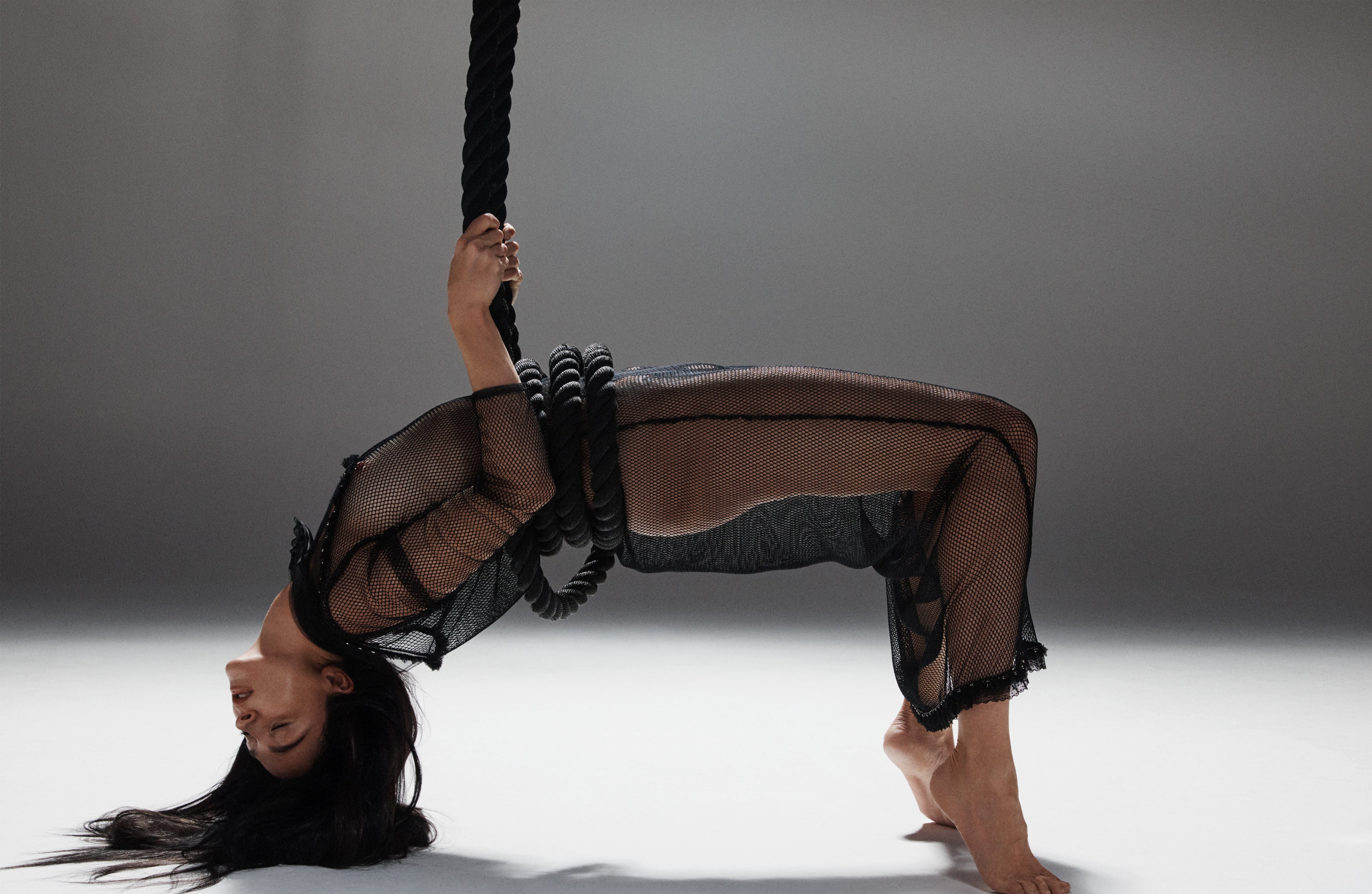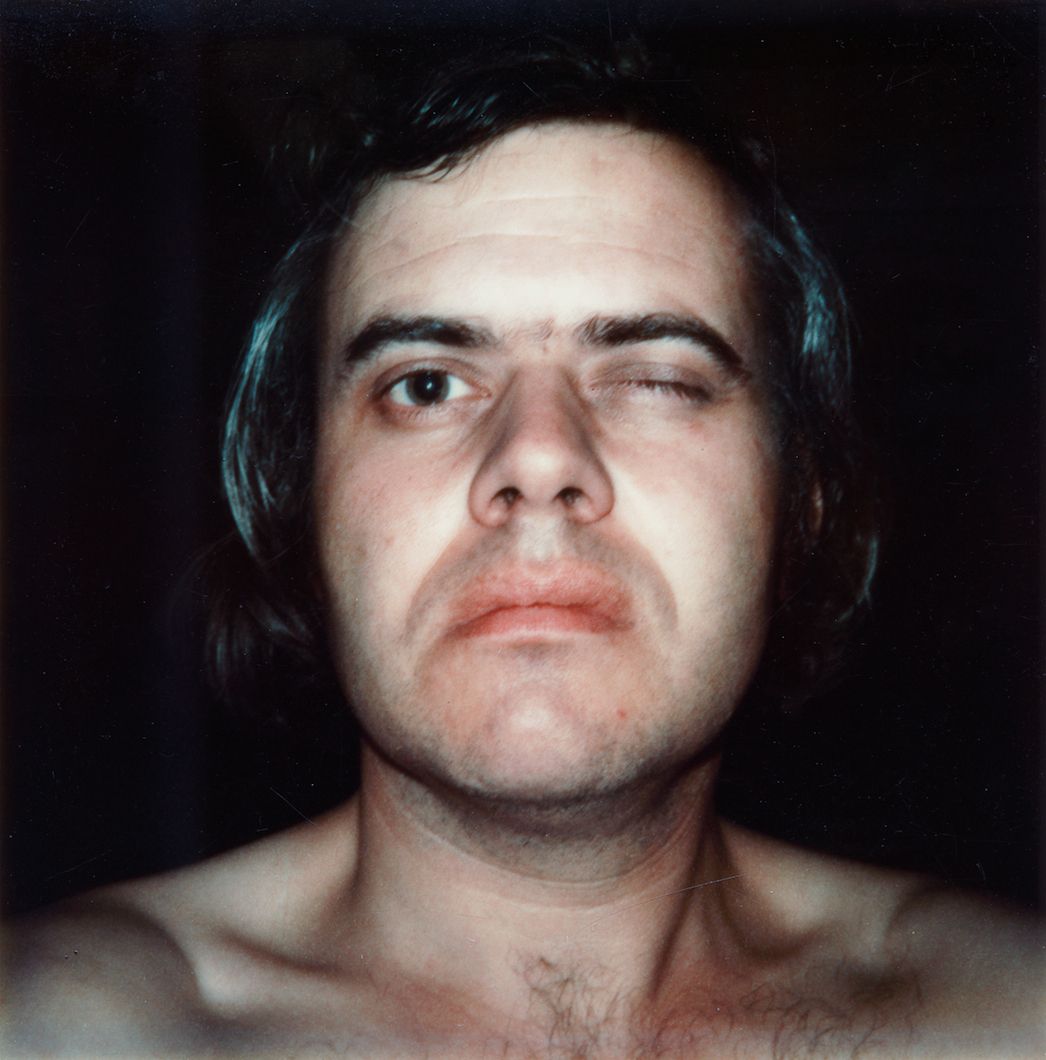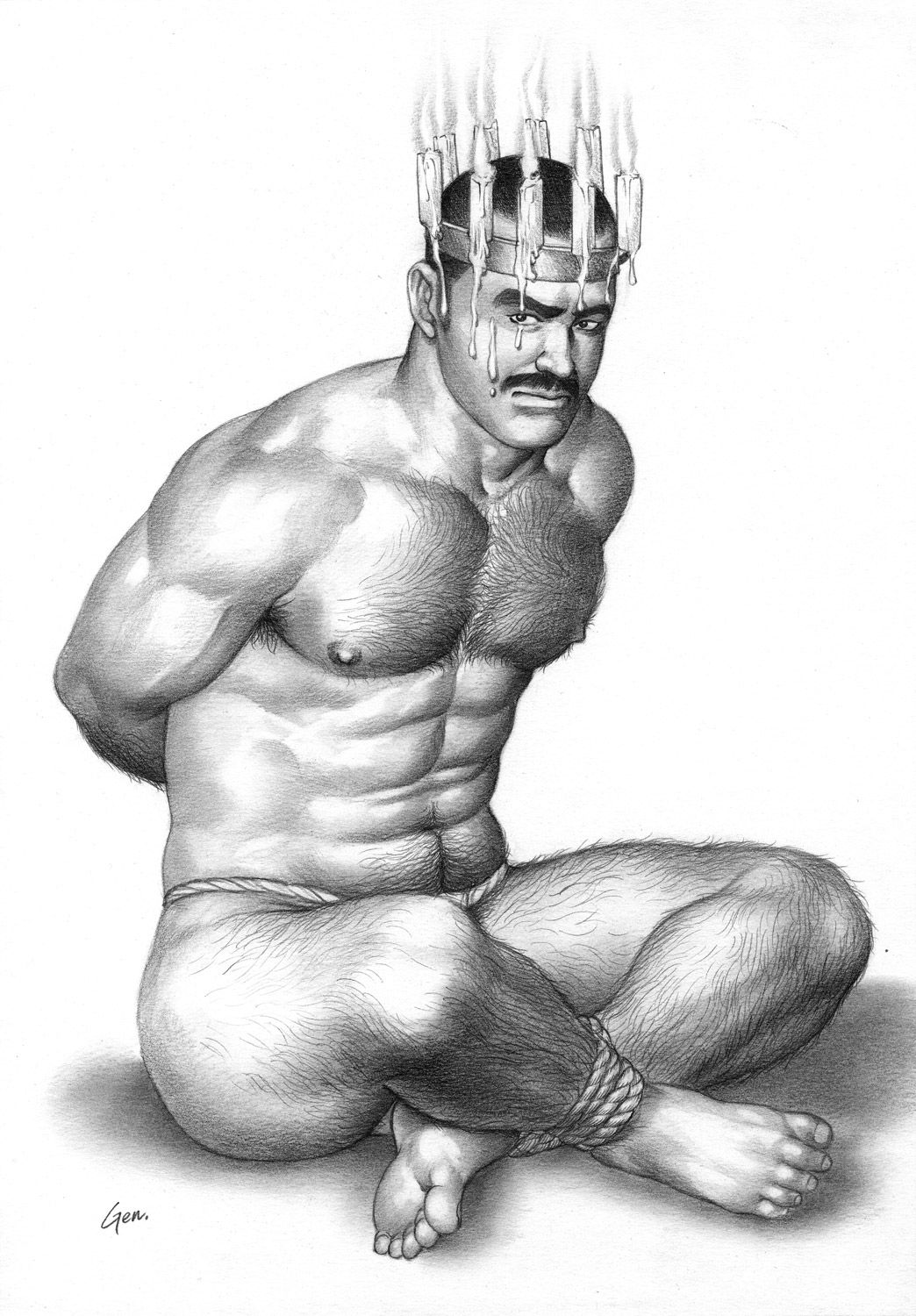HR GIGER & MIRE LEE: Horror, Slime, and Satanic Eroticism
|Cassidy George
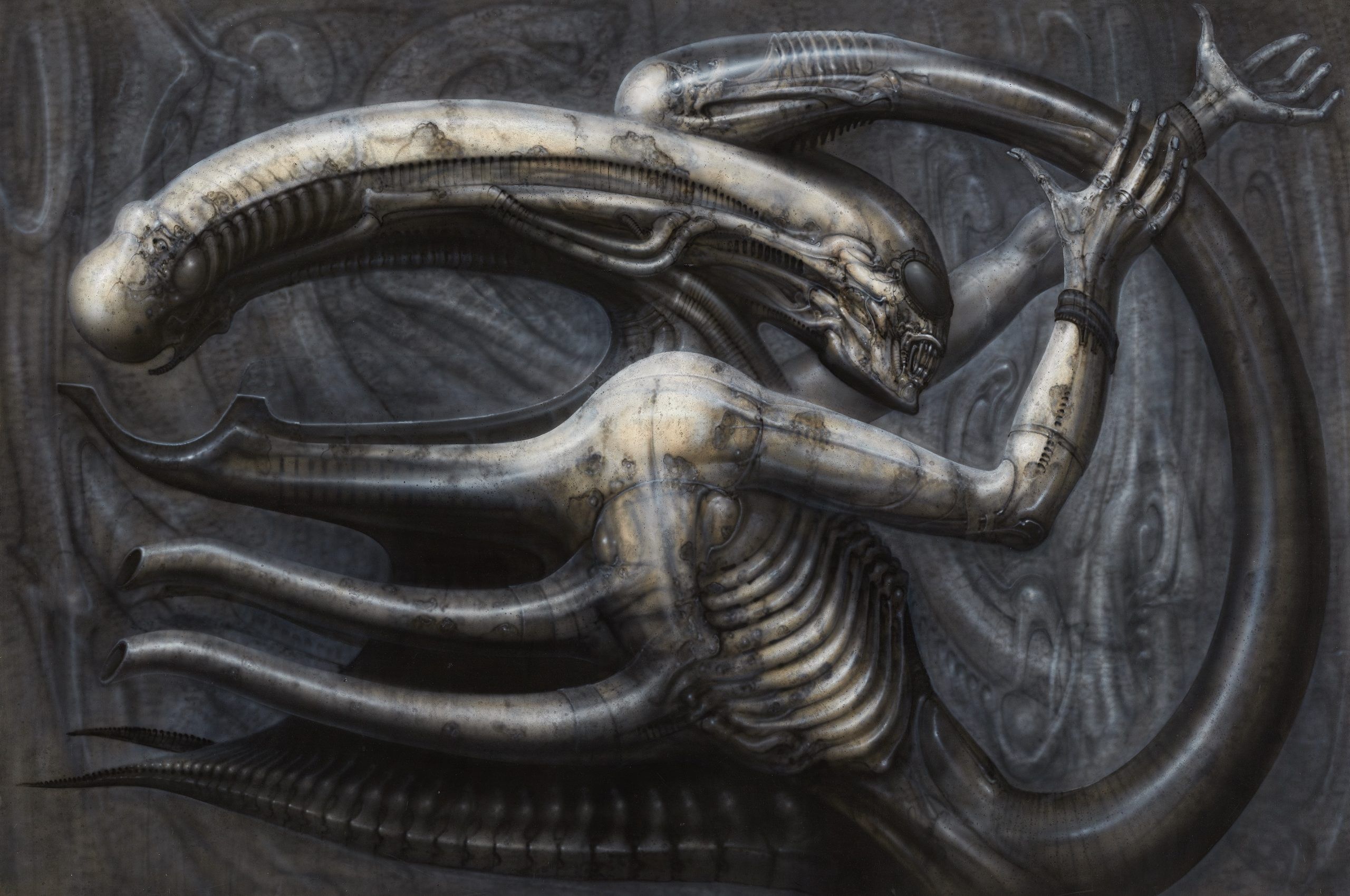
When Berlin’s Schinkel Pavillon announced its current exhibition, which pairs the work of the late Swiss surrealist HR Giger with the kinetic sculptures and alchemical installations of the South Korean artist Mire Lee, curator Agnes Gryczkowska knew it would raise eyebrows. Why would Schinkel do a Giger show? But confusion evidently bred curiosity, and curiosity bred acclaim. The show’s opening reception in September was attended by 2000 people. Among the colorful crowd of teenage sci-fi nerds, aging goths, tattoo artists, bikers, and films buffs were “more formal and traditional figures in the art world,” in Gryczkowska’s words. They approached her and professed their misgivings, saying things like, “I never thought this would work – but it does.”
The octagonal art venue – where "HR Giger & Mire Lee" will remain on display until January 16 — is currently overrun with creatures: some anatomical, some completely alien, some somewhere in between. Silicone sculptures that resemble umbilical cords and intestines hang from the ceiling, dripping — and occasionally squirting — a viscous, flesh colored fluid created by Lee. Atomic, mutated fetuses are suspended in the Giger paintings that hang from the walls, fragments of the nightmarish mythology that constitutes his oeuvre. Downstairs, a cousin of Giger’s best known progeny, the Xenomorph — cast as the monster in Ridley Scott’s 1979 film Alien — haunts the gallery’s ground floor. Giger’s iconic Necronom (Alien) sculpture, haunched like a sphinx, is staged in what Gryczkowska calls a “love story” with Lee’s slime covered, womb-like cell, Endless House. Previously unexhibited works by both artists are also on display, including explicit ink drawings of “satanic eroticism” from Giger’s private diaries, and Lee’s new Untitled sculpture, which writhes in agony on the floor: a creature so “pathetic” that Lee deemed it undeserving of a name.
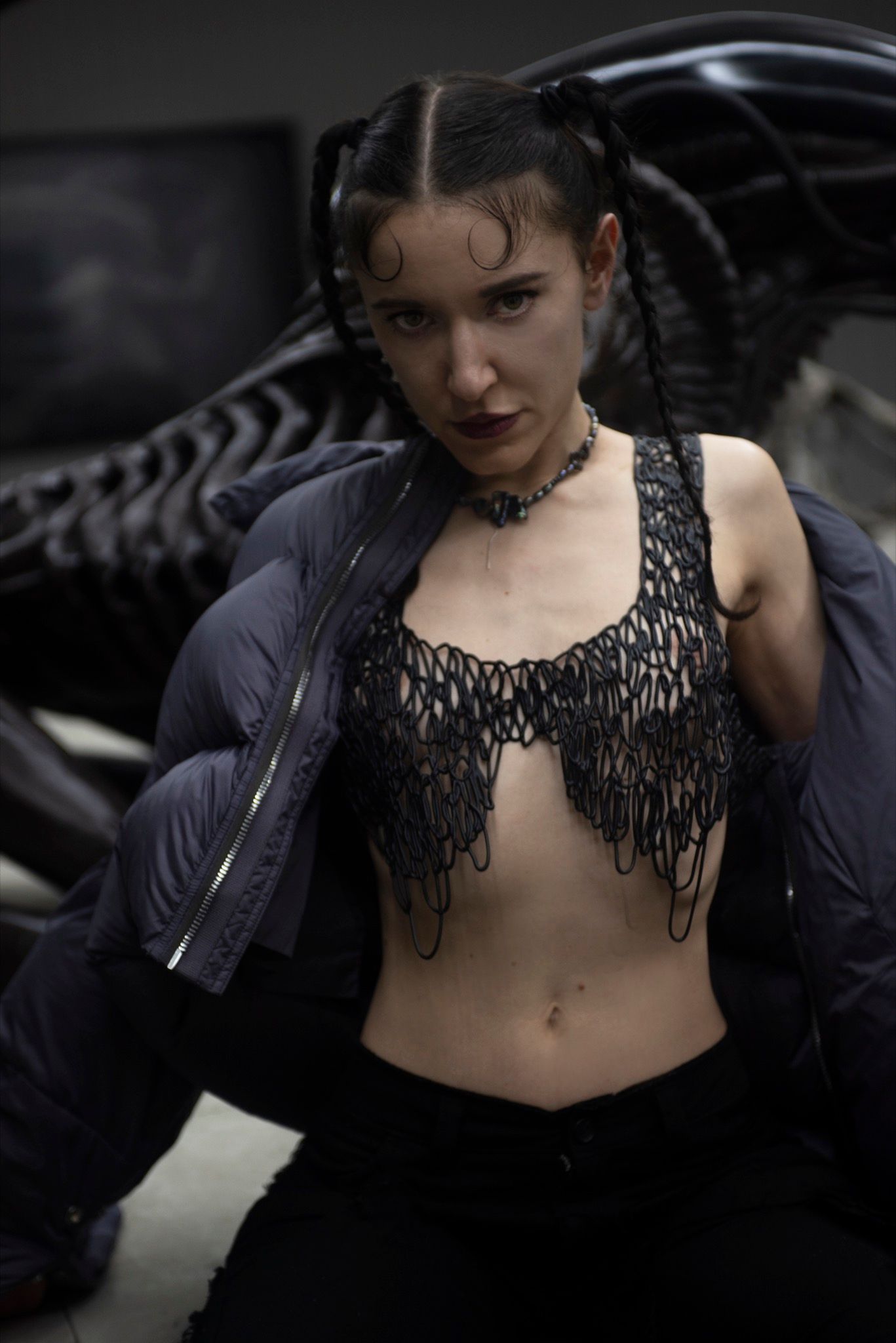
While Giger’s hybrid beings, which embody the terror of the nuclear threat, are the offspring of the Cold War, Lee’s disembodied, grotesque forms abstract the physical terror of sexual violence and the present day psychological terror of life on a dying, virus-plagued planet. Both animate their ages of anxiety with “phantasmagorias of humans and machines.” Their work coalesces in a dynamic interplay that aims to explore “the darkest arenas of the human body and the psyche.” This artistic union — and its enthusiastic reception — is a rumination on the appeal of the abject, and the theses of Julia Kristeva’s 1980 Powers of Horror. Giger and Lee both address the origins of horror as located by Kristeva in “corporal realities” and “a breakdown in the distinction between what is self and what is other.”
To discuss the semination of the exhibition, Gryczkowska, who worked for The Serpentine Galleries in London before her time at Schinkel, hosted me at her candle-lit home, where it became clear that she, like Giger and Lee, is a world builder. With her signature pigtail braids perched high, Gryczkowska sat beneath a faded reproduction of the medieval tapestry La Danse, de la Tenture de la Noble Pastorale and in front of a table carefully set with wine-filled silver chalices, macarons, and blackberries. As Hildegard von Bingen played softly in the background, Gryczkowska intersticed conversations about the show with anecdotes from her own life with a light-hearted smile. When I asked how she managed to smuggle alien porn into the Schinkel Pavillon, her tone was chipper.
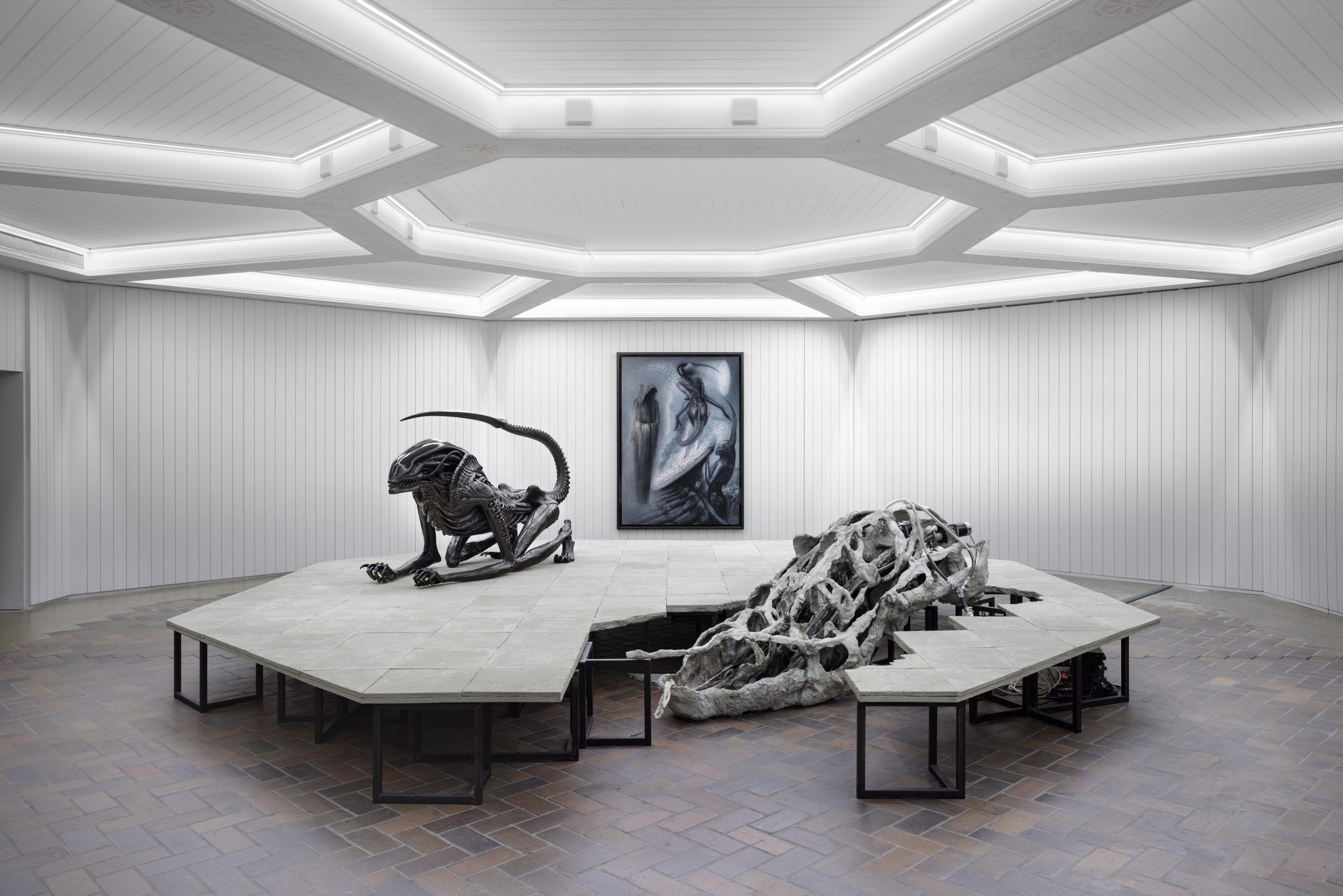
Agnes Gryczkowska: Firstly, I have to say that I’m really grateful to Schinkel Pavillon and its director Nina Pohl, who allowed for a program to come to light that not many other institutions would. Giger appeared in my proposals for years, but Nina was a little hesitant at first, mostly because of funding issues. It’s not easy to justify why you want to do a Giger show, but the pandemic gave us a great angle. I said, “Nina, there’s a plague! It makes so much sense. His work is filled with mutated bodies and respiratory apparatuses. We’re living in apocalyptic times.”
Also, so many artists love Giger and are influenced by him, but institutions haven’t recognized the significance of his work at all. It’s mostly been shown in more commercial exhibitions about film design or Hollywood, so he’s yet to have a moment within the serious fine art world.
Cassidy George: Why do you think that is?
I don’t think people are aware of how complex and rich in socio-political messaging and craftsmanship his work is. I think the awareness of his craftsmanship particularly got a little lost as his work has been reproduced so widely within the digital realm. His airbrush works became too associated with the Alien movies and even though they gained a “cult” status, their real meaning and beauty was diluted in the process. I was careful to select just a few of Giger’s airbrush works: Necronom IV, Mutants and my personal favorite Magus, so that they could “breathe” and still feel very precious. Many people are also not at all aware of Giger’s early ink drawings. I was blown away by Giger’s skill as I did more in-depth research into his archive with the help of the wonderful Marco Witzig, from the Giger Museum. I discovered so many ink drawings and oil paintings that Giger made before the airbrushing technique in the 70s than I knew of, which left me speechless.
How were you first introduced to Giger’s work?
I guess by being a goth teenager. Giger’s art entered the world of music too. He did album covers and his work was quite visible in the metal, industrial and punk scenes. He also worked with Debbie Harry!
So you’re not an Alien fan?
I actually didn’t even discover that he did Alien until I was an adult. I’m definitely not a part of the sci-fi community and don’t view his work within that context. I love Giger because he created a dark mythology, and mythologies in general fascinate me. I’d say that only a handful of artists throughout history were successful in inventing a unique universe that extends to every detail of their body of work – a Gesamtkunstwerk, I suppose. Giger’s work carries such heavy visual weight that it’s all encompassing, almost like a religion. Art is often an extension of faiths and a portal to things that move beyond the physical world.
But to be honest, I think I first became interested in Giger because his work is so sexual. When I was younger I was very into hentai, and Giger somehow falls into that world. It’s the same with Mire Lee. She also got into Giger when she was a teenager. Her first art book was a Giger catalogue that her Dad gave her as a gift.
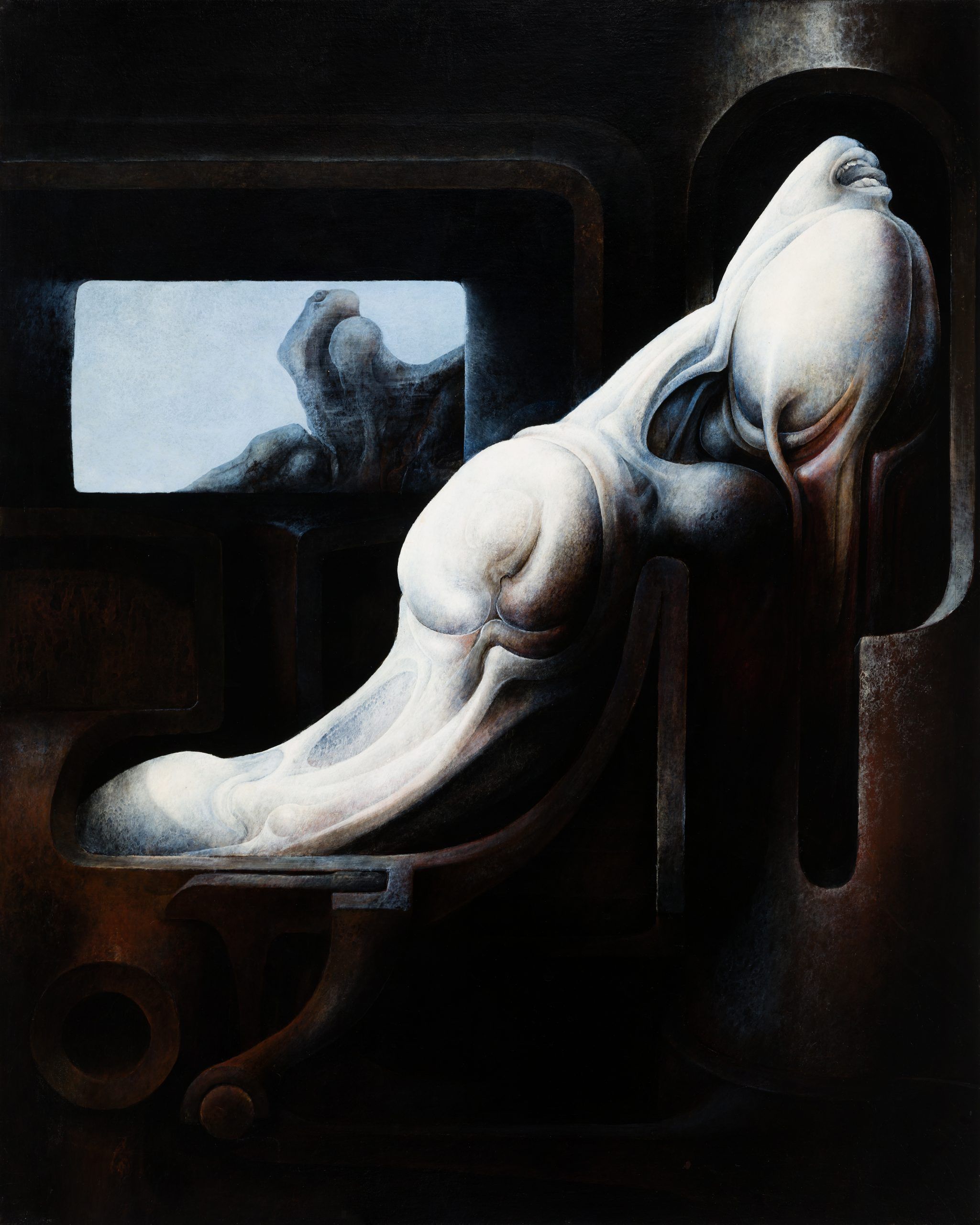
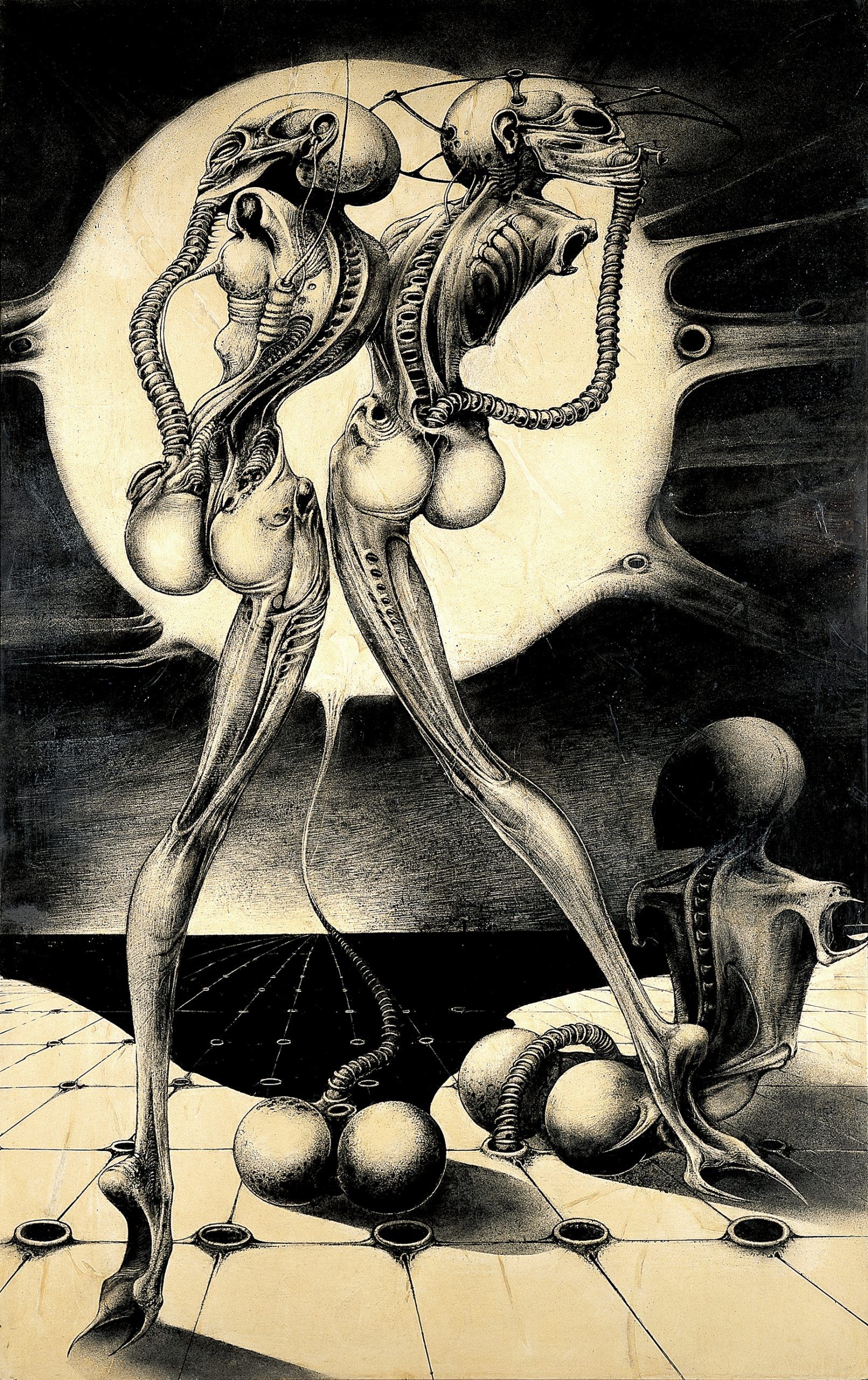
“Giger’s work carries such heavy visual weight that it’s all encompassing, almost like a religion.”
When did it occur to you to match Giger with Mire Lee?
It happened very organically. When I came across Mire’s work, Nina and I knew it was the perfect pairing. I saw her sculptures and immediately thought, “this is very Giger.” She inhabits the world that he is proposing and she touches upon similar themes but in a more emotional and psychologically uncomfortable way. She represents the same issues — themes around sex, violence, shame, fear, and the abject — more abstractly. For example, there’s a new sculpture in the room downstairs, a creature that’s twisting on the floor, as if it’s in pain. She named it Untitled to make the creature “even more pathetic than it already is.” Mire loves seeing her work as pathetic, actually. She believes that once you’ve accepted that state, it can be empowering.
Eroticism and degradation often go hand in hand, but it’s not something many people, and I think women in particular, are comfortable acknowledging or exploring in the light of day. Perhaps that’s why it’s so powerful to see it in gallery lighting?
Mire’s work is powerful precisely because of this taboo, and because it challenges how women are “supposed” to behave, and in her case, also how women in South Korea are supposed to behave. I hugely admire Mire. She’s a young, female artist who is totally unafraid to discuss her own addiction to porn, and who doesn’t shy away from even the most difficult topics within the fields of sexuality and fetishes. The exhibition includes a video piece called Faces that stitches together the non-sexual sequences from the opening scenes of rape pornography.
It’s been an interesting challenge to try and contextualize some of these topics for broader audiences as a curator, and to figure out how to approach the themes in the show from the perspective of promoting sexual emancipation in general. Imagine my position, trying to explain the complex messaging of this video piece to a group of young female art students. I was like, “Well ladies, I suppose it’s fine to be addicted to porn these days!”
Did you fear that you, or the show, would be criticized?
The PC police are everywhere nowadays! I was aware that the show might be criticized. At the same time though, one of the reasons I wanted to make it happen was the fact that Giger’s work has been resurfacing so heavily within LGBTQ communities. His grotesque creatures hover between human, animal and apparatus, male and female, dead and alive. They are freed in a way.
I have also always been very interested in the idea of going deep into the infrastructure of an institution and unpacking it completely from the inside, because I feel like people often do the opposite. If you’re doing something confrontational or shocking, you typically do it from the outside of the system or infrastructure you are attempting to change.
Someone who has done it brilliantly is Cosey Fanni Tutti, who remains one of my biggest heroes. She is an artist and sex worker who was part of COUM Transmission and Throbbing Gristle. She created the famous Prostitution project in 1976, and exhibited her own pornography at the Institute of Contemporary Arts in London, which literally caused a riot. She and COUM continued to receive Arts Council funding, even though Cosey’s work included controversial performances, such as one on a wooden swing, which had a heart shape cut out of it. Tutti was pushed back and forth, swinging above the audience, and began pissing on them through the heart.
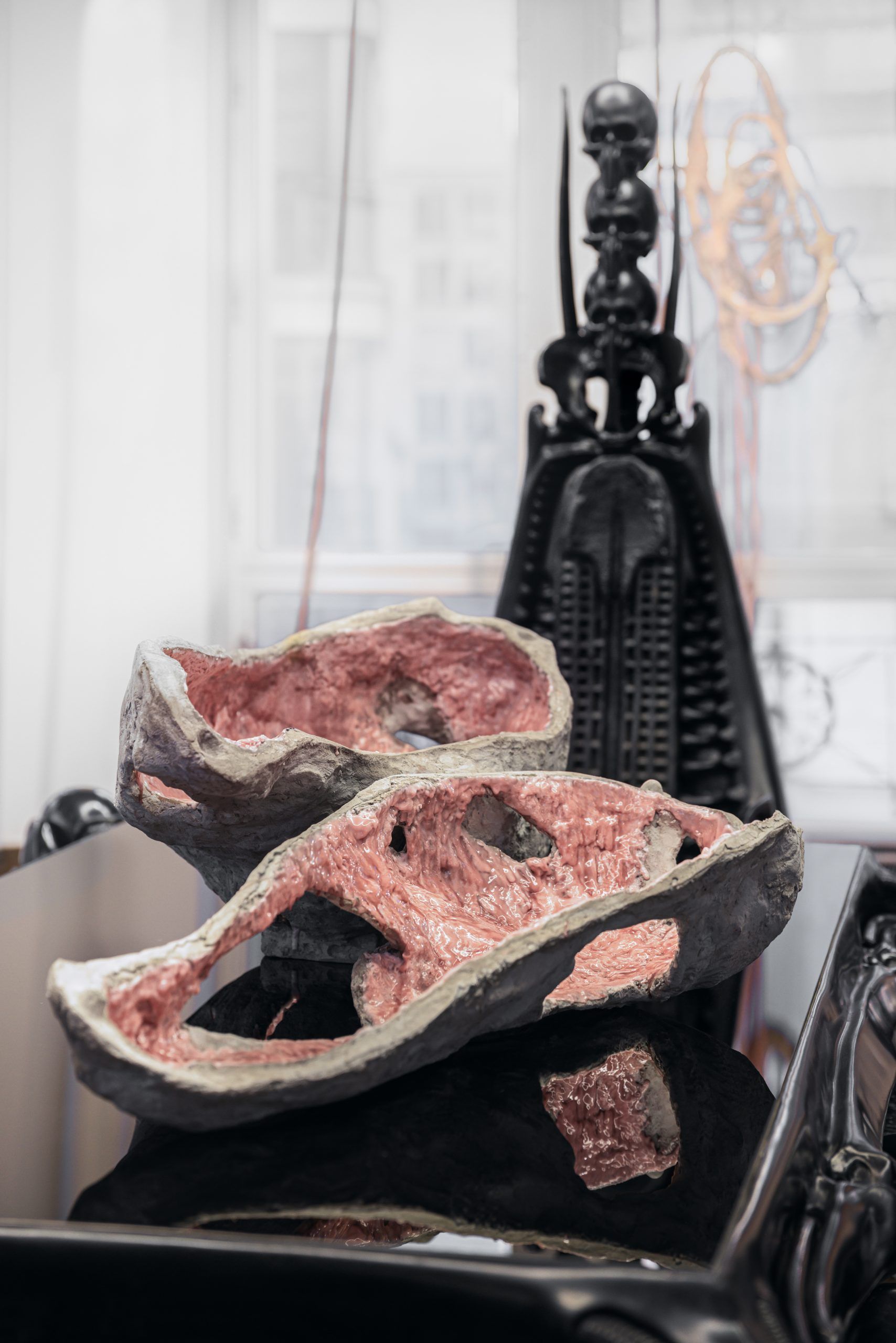
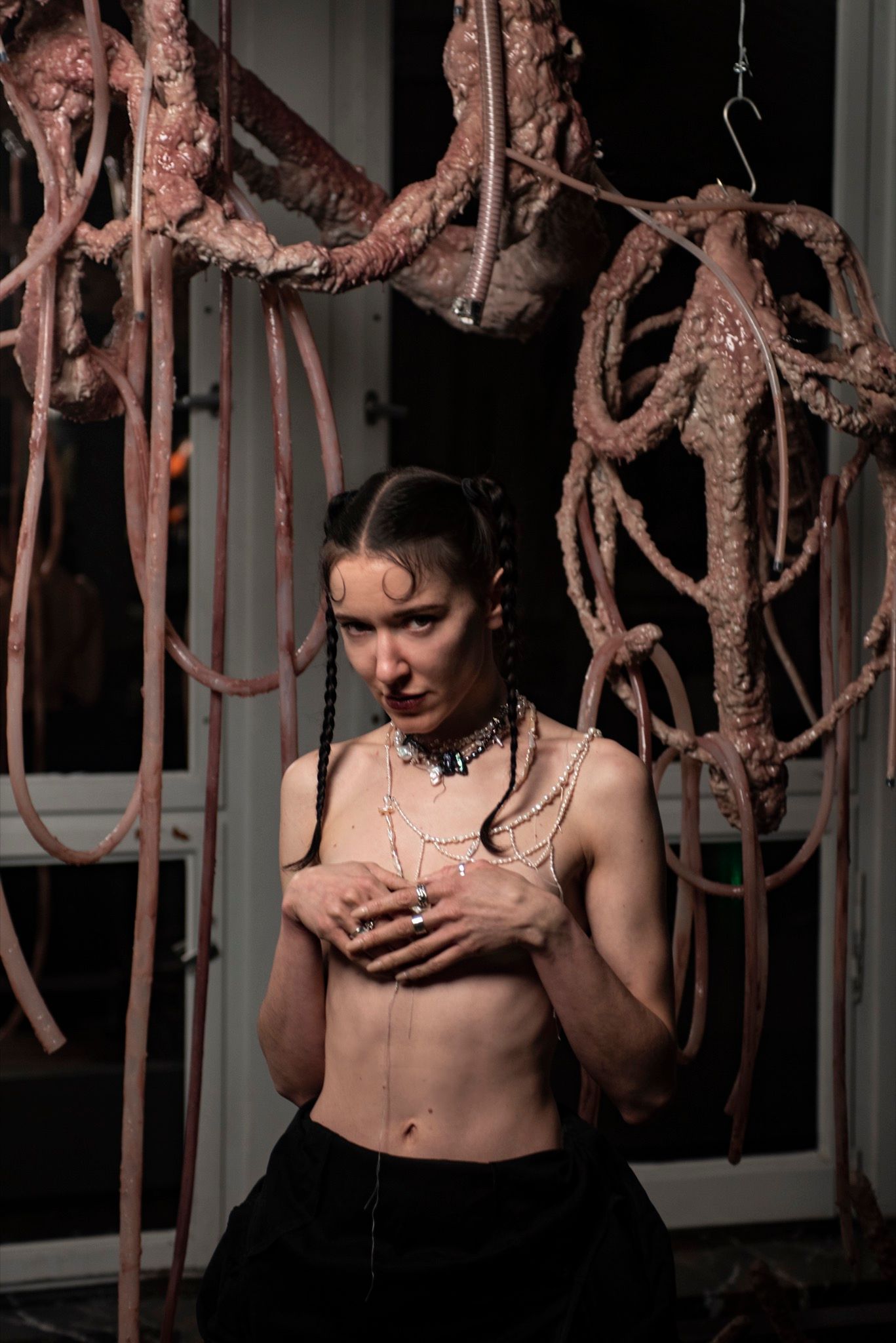
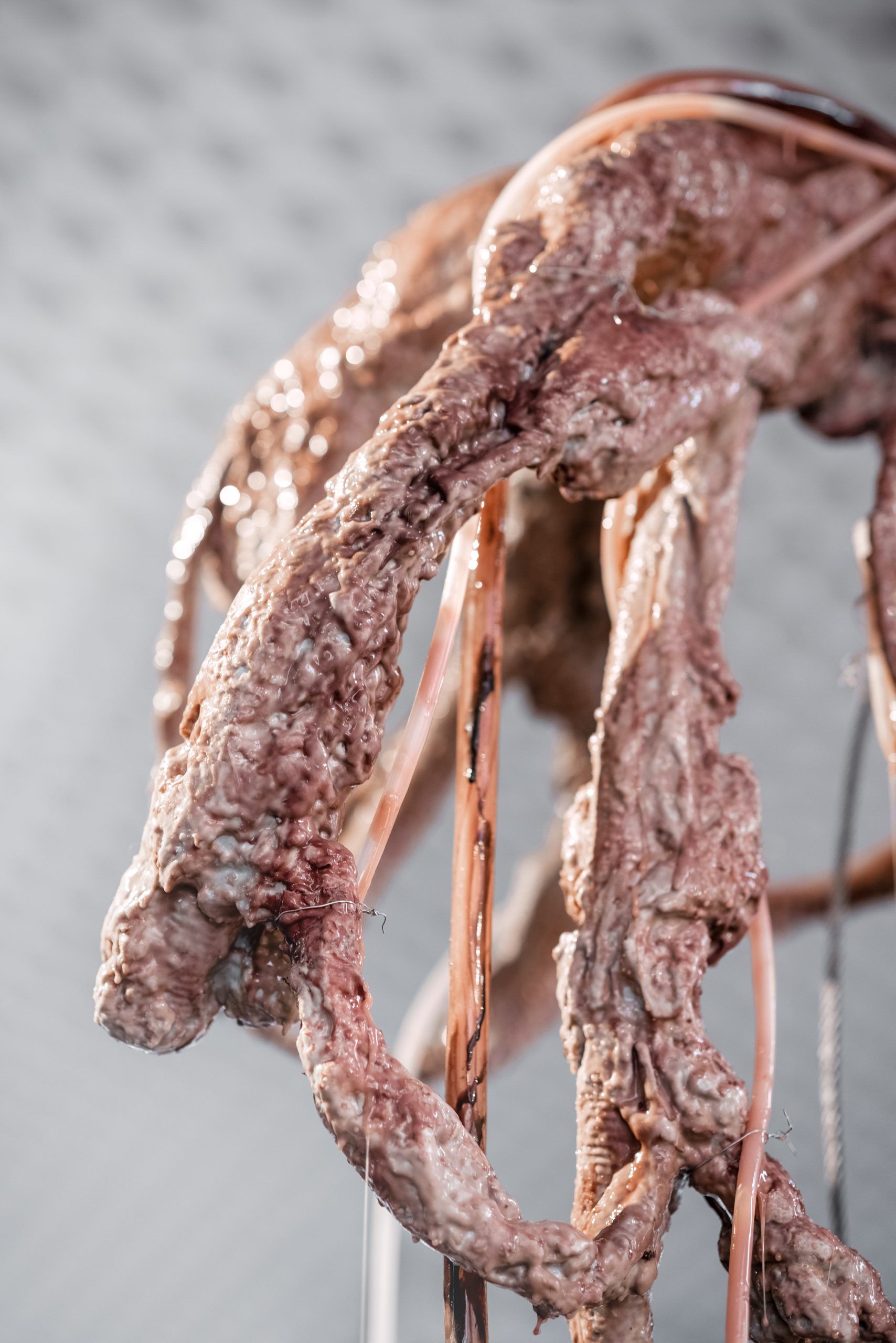
“In both of their work, these tunnels — often with unclear beginnings and ends — host conversations about death, life, rebirth, transformation, and the finitude of our bodies.”
Could we say similar things about Giger’s impact on the art and film worlds?
Giger was also a bit of an outsider, who didn’t fully belong to any of the worlds he operated in, other than perhaps the one he created. When he started working as an artist in the 1960s and 70s in Switzerland, it was the heyday of the Zurich Concretists. Everyone was making clean, geometric works and he clearly didn’t coincide artistically with that movement.
Being present in Hollywood made him even more of an outsider within the fine art world. His involvement in the Alien franchise won him an Oscar, but was at the same time detrimental to his ambitions as a fine artist. He wanted to be seen and recognized as a late surrealist but was suddenly categorized as the Alien sci-fi guy.
He also faced backlash from feminist figures, who found his work to be sexist and objectifying.
Do you?
No, because Giger was working with the concept of fetish and the exploration of deep, dark eroticism. He was very much inspired by dark, surrealist writers like Marquis de Sade, who has since been deemed problematic but is nevertheless still incredibly important and influential.
As far as I know, Giger was obsessed with women and conceived of them as superior, mystical beings. He actually only painted men a couple of times in his career, and they’re depicted as crippled creatures, lying on the floor. But of course his worship of the female body and its signifiers are explorations of a fetish which was coupled with fear.
I think a lot of that obsession came after the loss of his partner, the actress Li Tobler, who died of suicide at age 27. He was completely broken afterwards. She appears often throughout his work as a medusa-like figure. Giger also claimed to remember his own birth, and this “birth trauma” spawned his various existential crises. Growing up, particularly during the Cold War and in the age of the atomic threat and fear of biochemical warfare, he had a lot of anxiety about birthing children into a world that was potentially going to be doomed.
That’s why there are so many tunnels in his pieces, which of course is a vaginal reference. They’re also somewhat literal, because Giger grew up in a small village in Switzerland where there were a lot of small underground tunnels after the war. This obsession with tunnels is something that also informs Mire’s work. She also physically builds them herself with electrical engineering and plumbing. Giger studied industrial design, so they are similar in that way too. In both of their work, these tunnels — often with unclear beginnings and ends — host conversations about death, life, rebirth, transformation, and the finitude of our bodies.
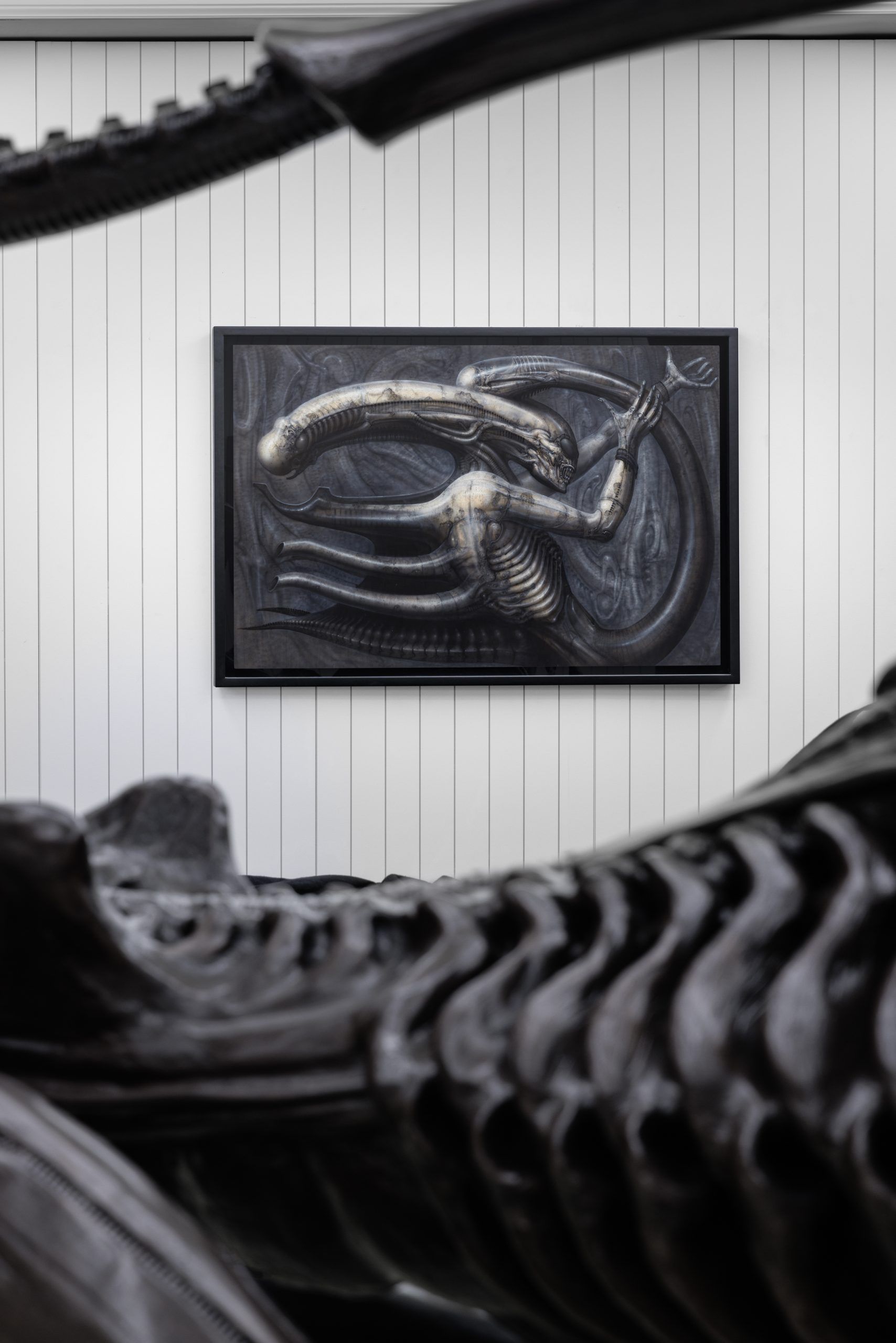
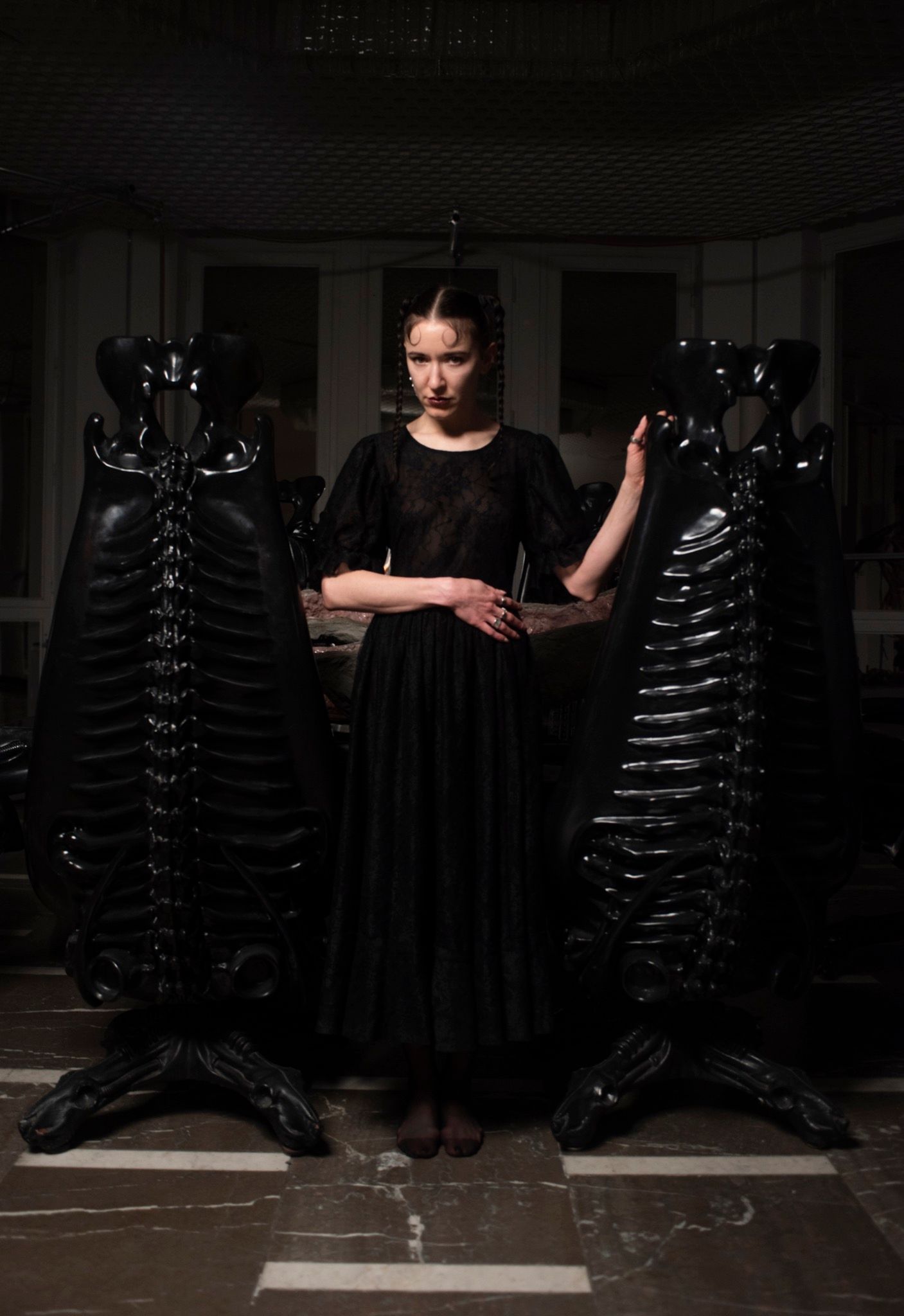
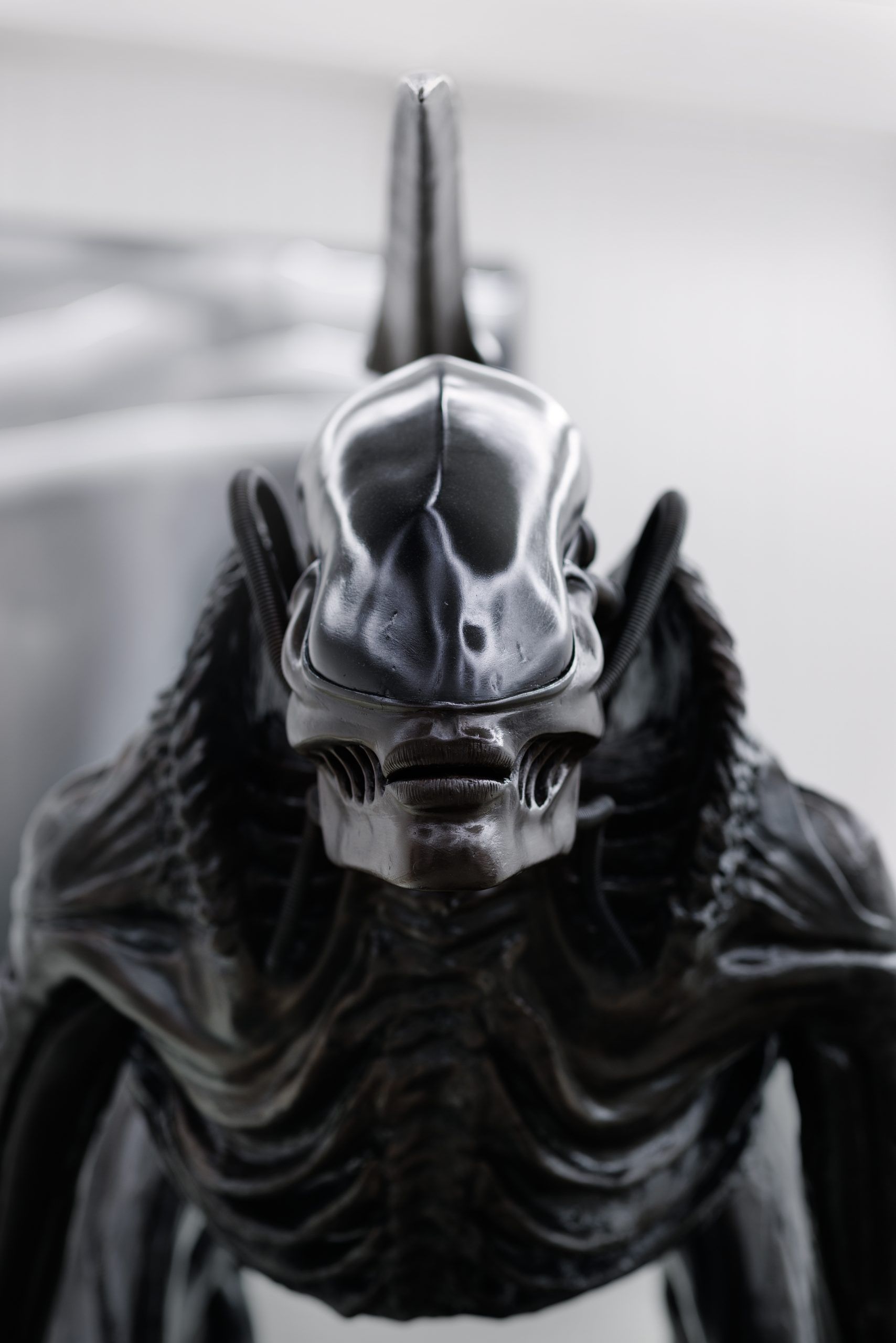
Slime is another recurring trope in the show. What better represents our contradictory relationship to the abject than unidentifiable, viscous fluid? It’s the pinnacle of horror and disgust but also the origin of human life and a facilitator of human intimacy.
In Julia Kristeva’s book, Powers of Horror, she describes this exact phenomenon and how it corresponds to bodily fluids. In it, she proposes a theory about this repulsion and desire we feel when we see blood, semen or a corpse. All of these things make us aware of our corporality and our bodily functions and, in doing so, create an ontological threat. Sartre also talked about slime being “the substance in-between,” and that’s why it freaks people out. It doesn’t belong to any world. It’s neither solid nor liquid, and that makes our brains say, “It’s so gross but I want to touch it so badly!” I think that phenomenon is relevant in everything Giger and Mire make. You look at their pieces and are unsure whether they’re dead or alive, from this world or another, and that’s a constant question.
We were also thinking about this a lot when we were writing the application in 2020, during the peak of the pandemic. At the time, nothing was more terrifying than the idea of the bodily fluids of “the other.” Snot and saliva were sheer terror.
Aren’t they still?
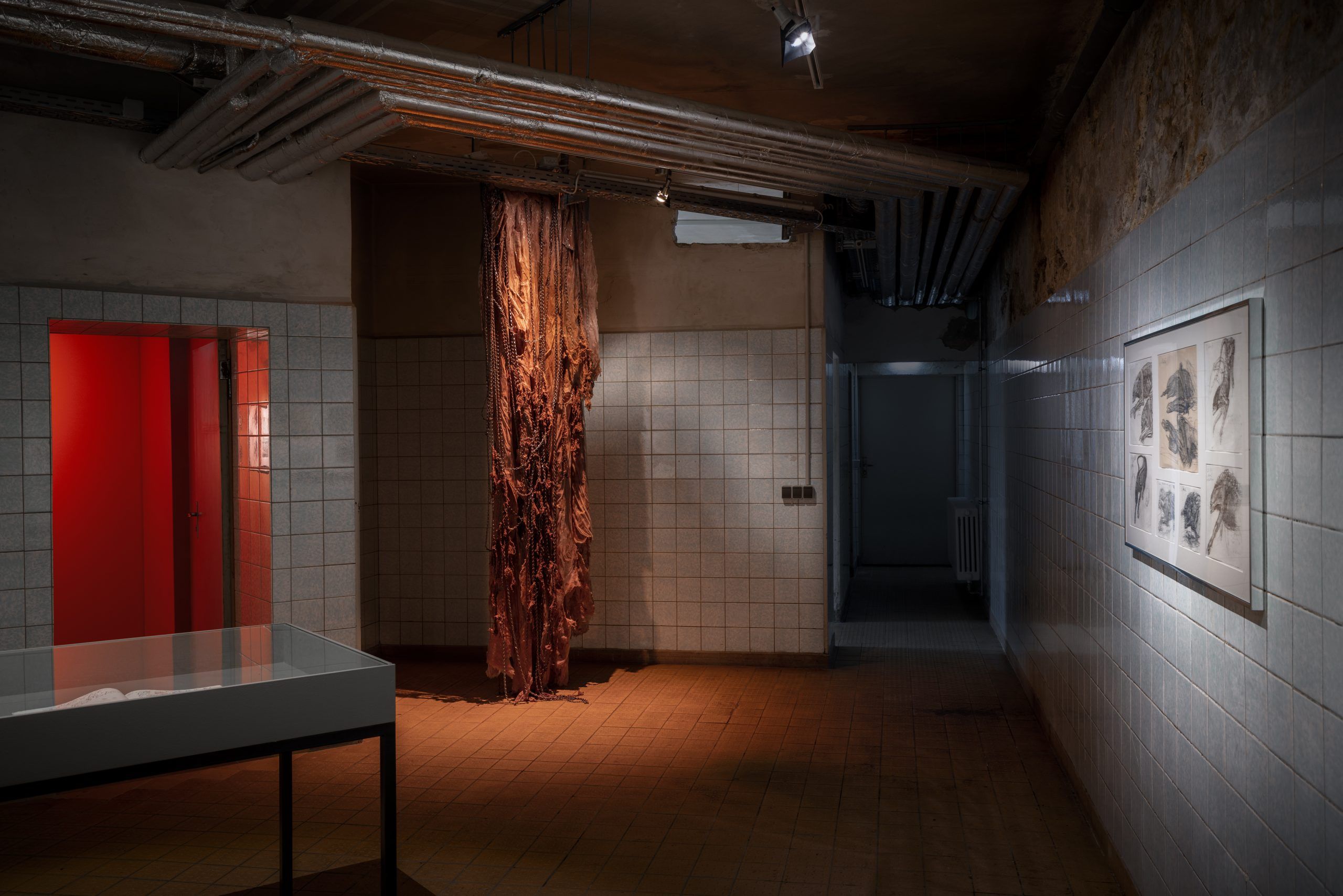
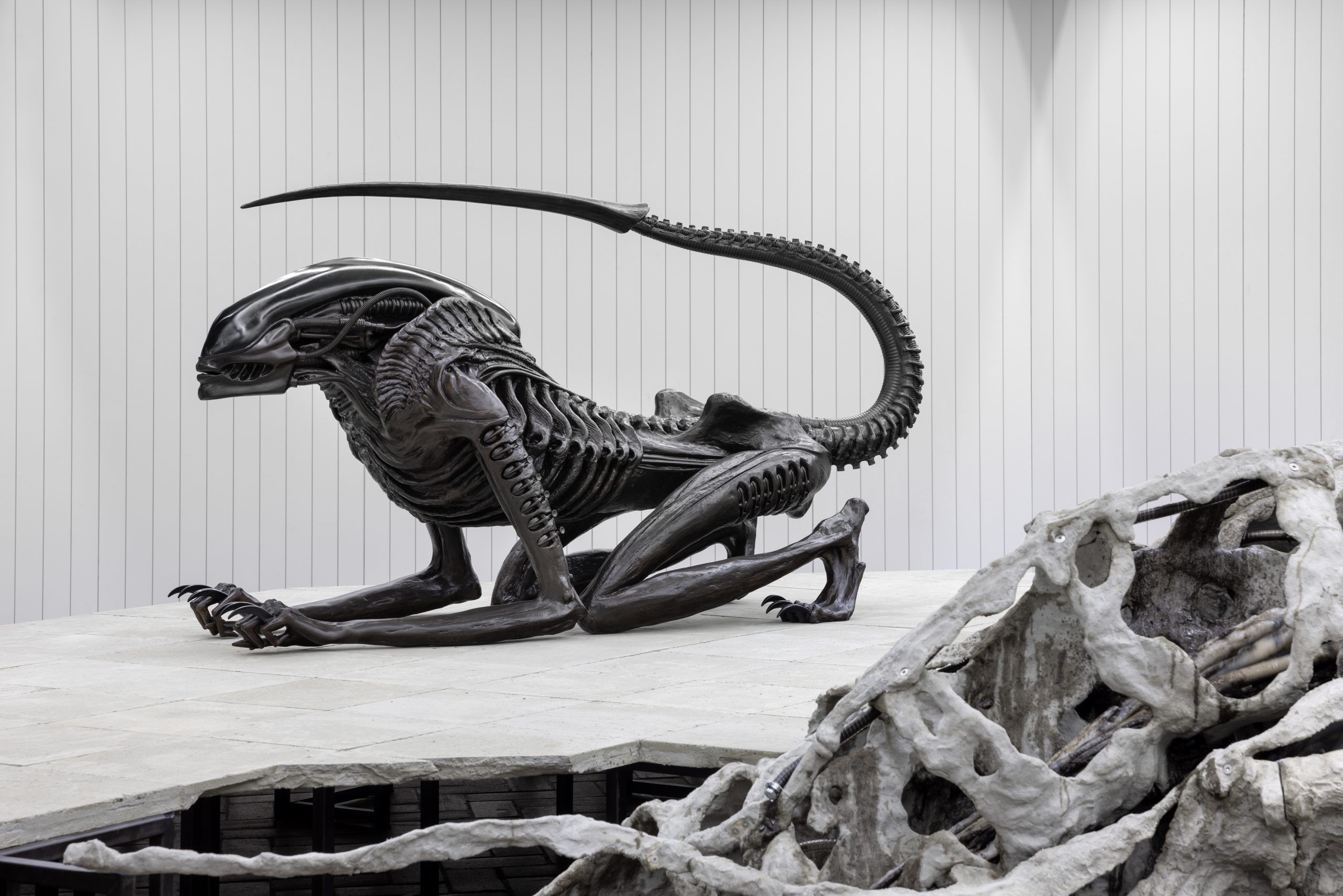
Credits
- Text: Cassidy George
